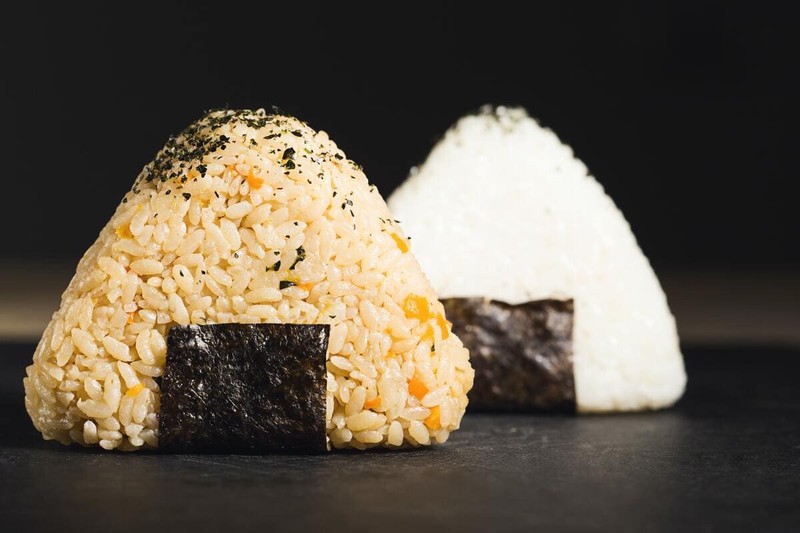What is an onigiri ?
Onigiri, also called rice balls, is a Japanese food made of white rice formed into a triangular or cylindrical shape and often wrapped in nori.

Despite popular belief, onigiri is not a form of sushi and should not be confused with the type of sushi called nigirizushi or simply nigiri. Onigiri is made with plain rice (sometimes lightly salted), while sushi is made with rice and vinegar, sugar and salt. Onigiri makes rice portable and easy to eat while preserving it, while sushi was born as a way to preserve fish.
What is an onigiri made of ?
Traditionally, an onigiri is filled with pickled ume (umeboshi), salted salmon, katsuobushi, kombu, tarako, mentaiko, takanazuke (pickled takana) or any other salty or acidic ingredient as a natural preservative. Most Japanese convenience stores offer onigiri with a variety of fillings and flavors. There are even specialty stores that sell only onigiri to go.
Due to the popularity of this trend in Japan, onigiri has become a popular staple in Japanese restaurants around the world.
When did onigiri first appear?
Onigiri first appeared in Japan in the XIᵉ century.
In fact, in Murasaki Shikibu's diary, she talks about people eating rice balls. At that time, onigiri were called tonjiki and often eaten at outdoor picnics.
Other writings, dating back to the seventeenthᵉ century, state that many samurai stored rice balls wrapped in a bamboo sheath as a quick lunchtime meal during war, but the origins of onigiri long predate Murasaki. Before the use of chopsticks became widespread in the Nara period, rice was frequently rolled into a small ball so that it could be easily picked up. In the Heian period, rice was also shaped into small rectangular shapes called tonjiki so that it could be piled up on a plate and eaten simply.
From the Kamakura period to the early Edo period, onigiri were used as a quick meal. This was logical since cooks only had to think of preparing enough onigiri and did not have to worry about serving them.






